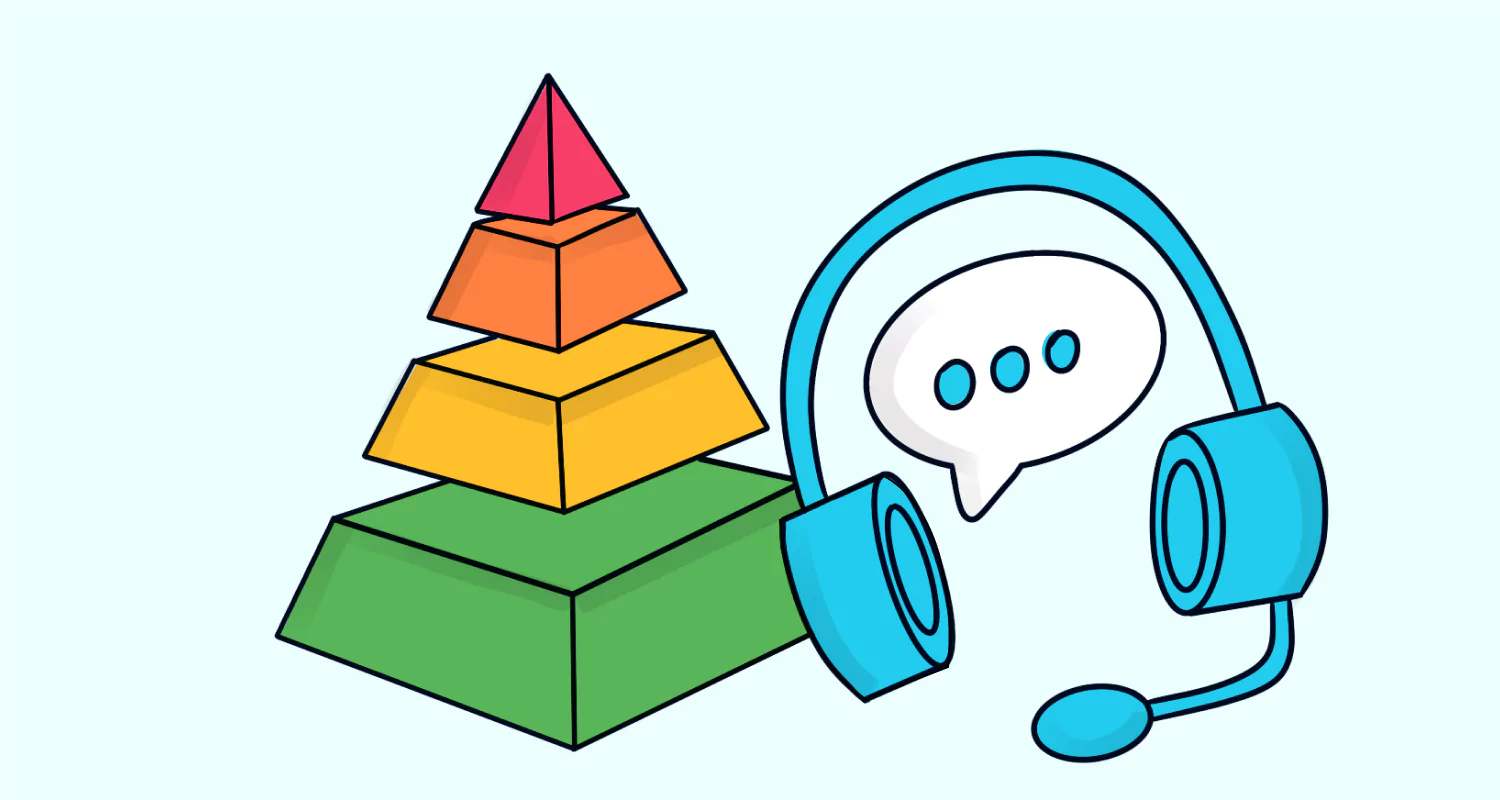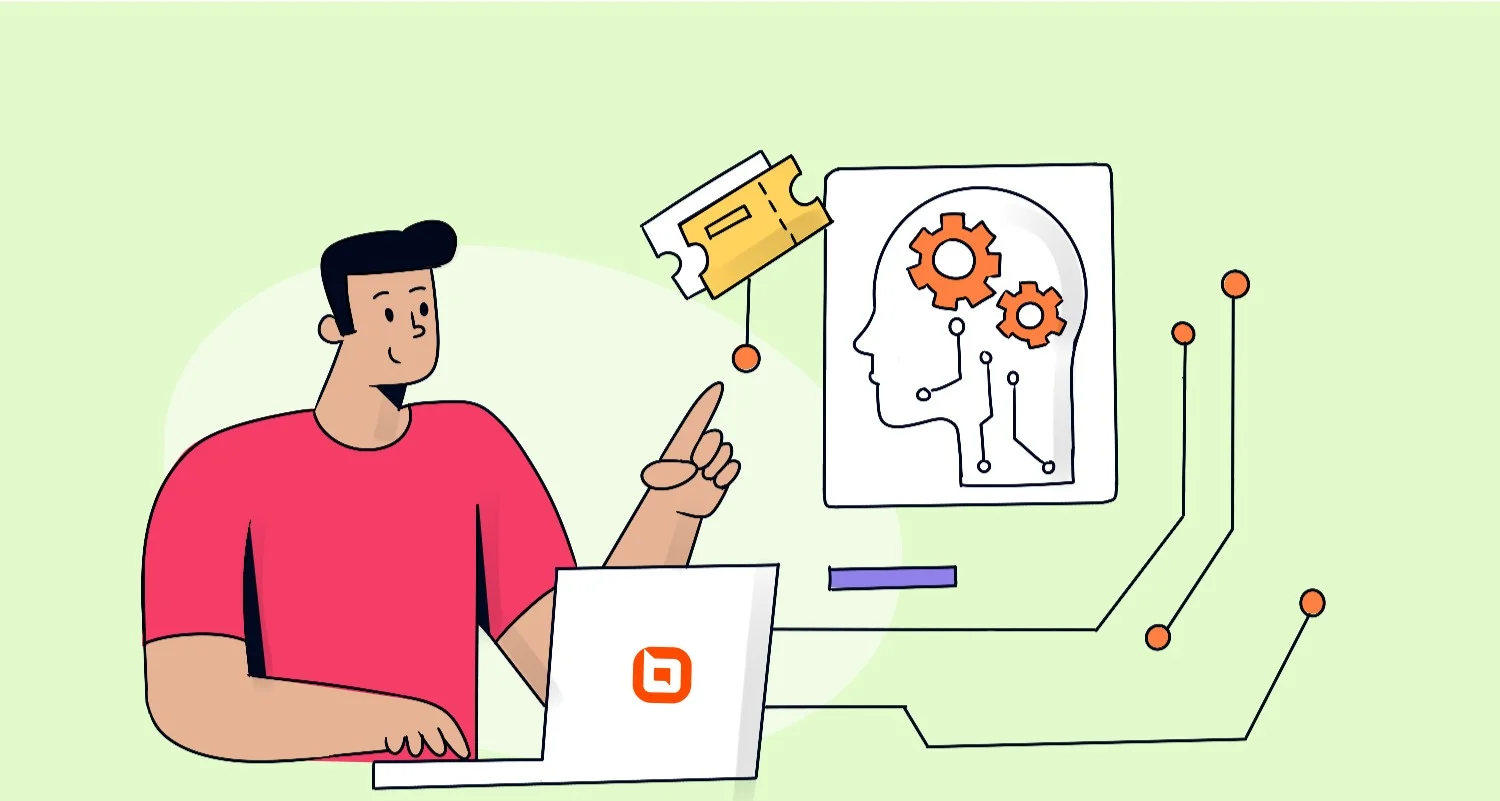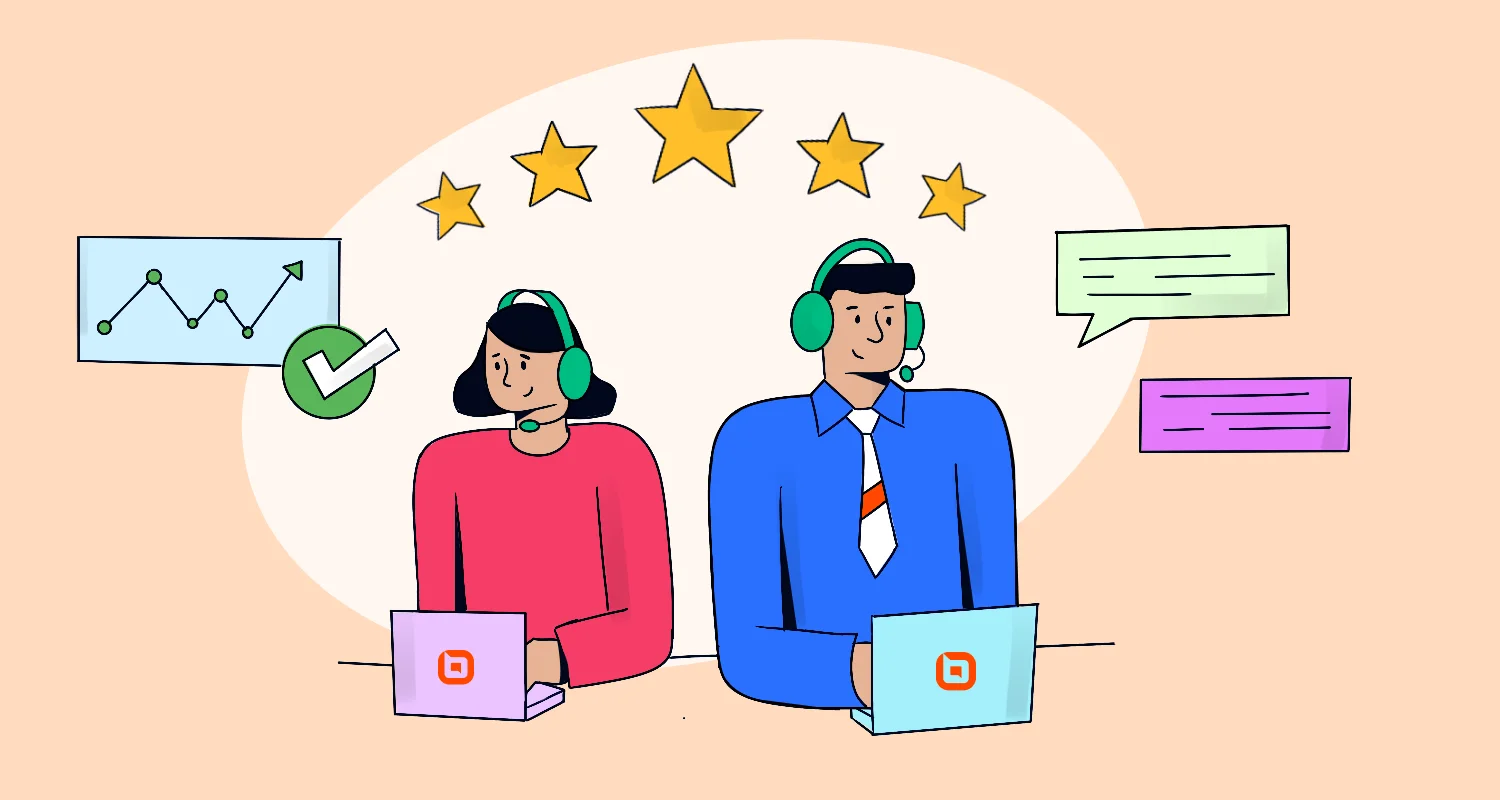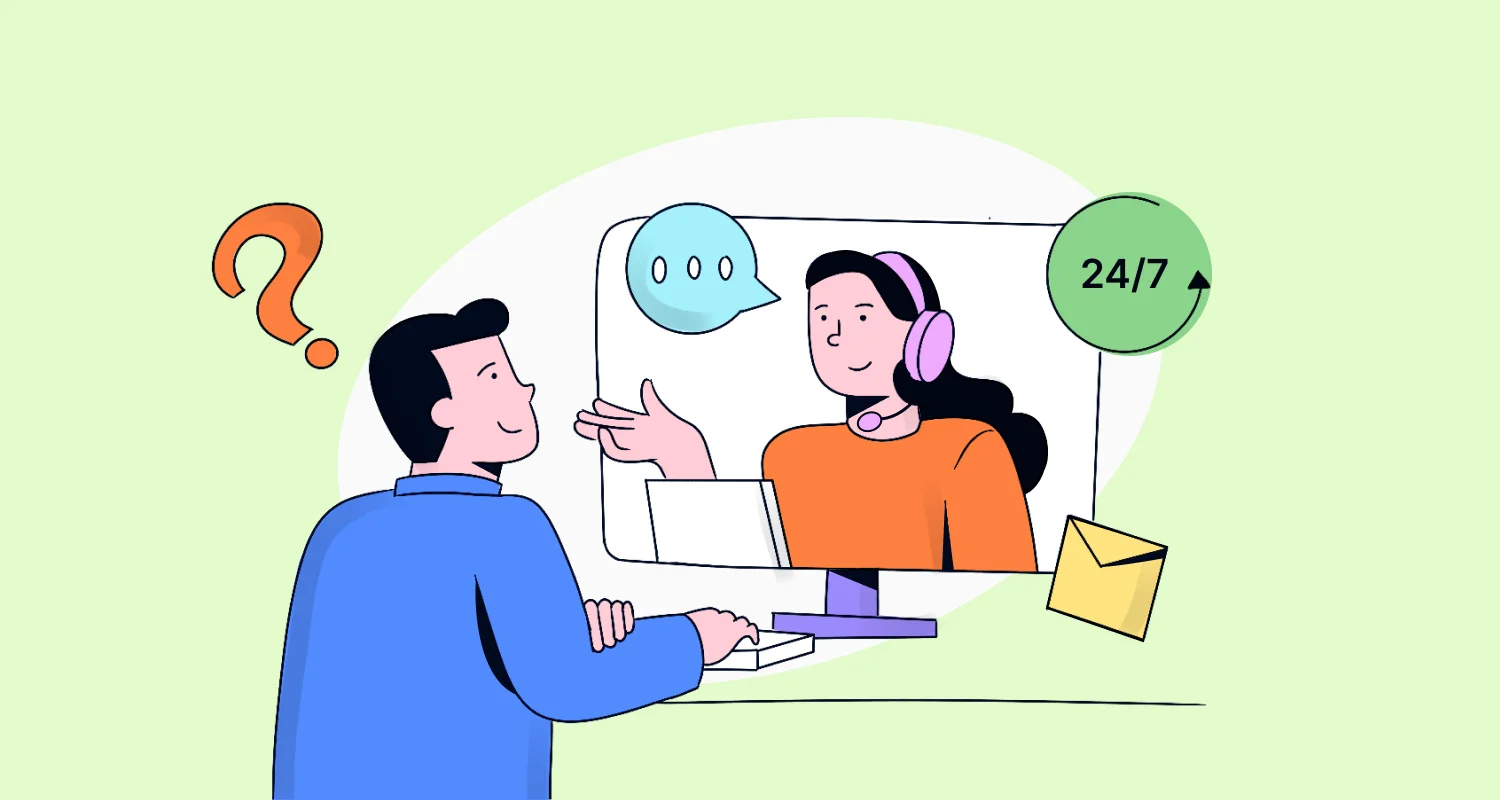A customer support team usually handles a range of inquiries, from simple ones such as password resets to more complex issues, like network issues or system errors.
However, when agents are overwhelmed with technical issues, longer wait times and frustrated customers are inevitable.
This is where tiered support comes into play. Think of it like sorting laundry: Instead of mixing all the clothes, you can separate them by color, fabric type, or washing temperature.
This ensures that each item is cleaned in the best way possible.
Similarly, tiered support organizes customer queries and assigns them to appropriate teams.
In this article, we will explore the benefits of tiered support, its components, and the steps to incorporate tiered support into your company’s support system.
What is tiered support?
Tiered support is a customer support model that involves dividing support services into different levels or tiers that deal with issues of different complexity. The idea is to provide customers with more specialized and efficient support by routing their requests to the appropriate tier of support.
By using tiered support, businesses enable teams to organize issues quickly, with basic issues handled by lower tiers and more complex ones escalated to higher tiers.
Categories of tiered support service
The total number of tiers in a support system depends on the complexity of service, the volume of support tickets received, and the level of specialized knowledge required to solve customer issues.
Let’s have a look at some of the tiered service examples.
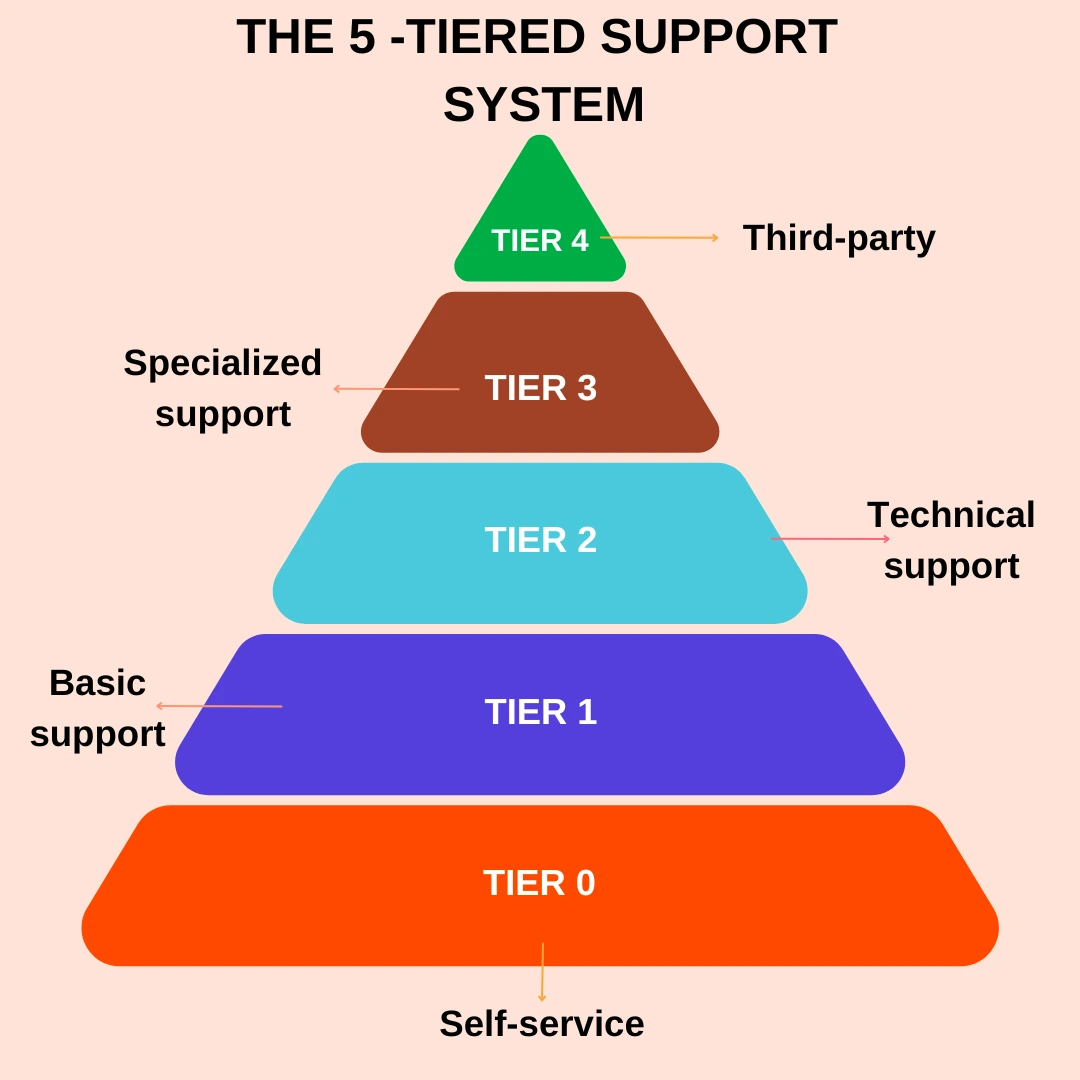
Tier 0 includes:
- Self-service tools such as FAQs pages, tutorials, and knowledge base articles.
- Automated customer service chatbots to handle basic inquiries.
Example:
A customer wants to reset their account password. Instead of contacting an agent, they use the Forgot Password option on the company website or app.
This automated process guides them through identity verification and password reset, resolving the issue without requiring agent intervention.
Tier 1 (basic support)
Tier 1 is the frontline help desk, handling simple, common, or routine questions that do not require technical expertise.
When a customer is unable to resolve a common issue independently, they reach out for support. In this case, the tier 1 agent will provide initial guidance.
However, if the issue persists or is more complex than tier 1 can handle, it is escalated to the next support level for further resolution.
Key roles of tier 1:
- Answering questions about products and services.
- Assisting customers with account setup.
- Providing basic solutions for common issues.
Example:
If a customer contacts the support team because they are unable to log in to their account. The tier 1 agent verifies the customer’s identity to ensure security.
Upon investigation, the agent discovers that the issue is a locked account caused by multiple failed login attempts.
The agent then guides the customer through the necessary steps to unlock the account, ensuring they regain access.
Tier 2 (technical support)
When issues cannot be resolved at tier 0 or tier 1, they are escalated to tier 2 support agents. These agents have greater knowledge and expertise about the product or service, enabling them to address more technical problems.
Key roles of tier 2:
- Helping customers in utilizing specific features.
- Fixing complicated customer issues.
- Addressing complaints related to product problems.
Example:
If a customer can’t connect to the wi-fi, tier 1 might attempt basic troubleshooting, such as verifying network credentials. If the issue persists, it is escalated to tier 2, where the agent investigates deeper technical problems, such as router configurations or software compatibility.
Tier 3 (specialized support)
Tier 3 handles issues that require advanced expertise and specialized knowledge to resolve, like complex technical problems. These queries often take more time, ranging from several hours to weeks, as they demand thorough investigation and detailed solutions.
Key roles of tier 3:
- Resolving complex, high-priority issues requiring advanced technical expertise.
- Collaborating with engineers or developers to address software bugs and hardware failures.
- Delivering tailored solutions for unique customer requirements.
Example:
If a customer reports unauthorized access to their account and suspects sensitive data might be compromised, tier 3 investigates by analyzing logs, and identifying the source of the breach. They then implement measures to secure the account and advise the customer on strategies to prevent future issues.
Tier 4 (third-party)
Not every organization has a tier 4, as it typically involves outsourcing customer service issues to external experts or advanced equipment providers. tier 4 addresses complex issues, such as bugs, patches, or feature requests, that exceed the capacity of internal support teams and require collaboration with third parties.
Key roles of tier 4
- Works closely tier 3 to resolve critical problems or implement custom solutions.
- Provides information to improve products, services, and internal processes.
- Acts as the final point of escalation for unresolved issues.
Example:
A customer using a CRM system encounters a file upload issue when saving documents to a third-party cloud storage service like Google Drive. A tier 3 agent investigates and identifies an authentication failure in the third-party storage API.
Since this is an external technical issue, the issue will have to be escalated to the Google Drive support team, who are the tier 4 support.
Finally, the Google Drive support teams fixes the issue or shares the solution with the tier 3 agents who contacted them.
Steps to implementing a tiered support system
Now that you understand a tiered support system, let’s look at the steps for implementing one.
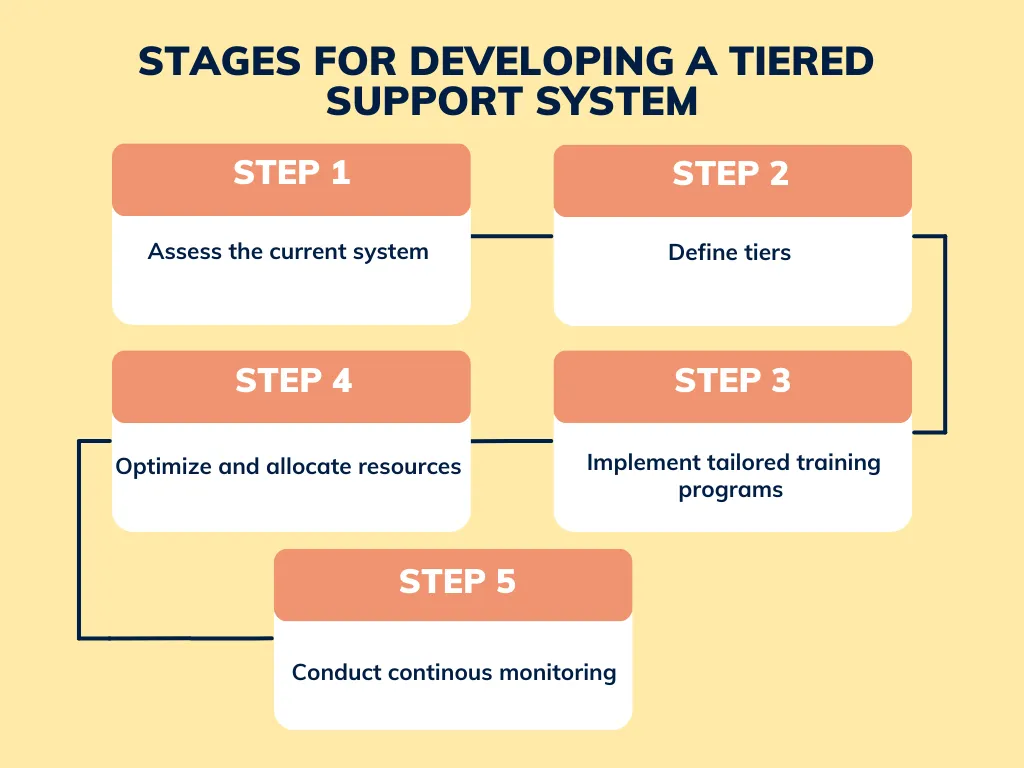
Assess the current system
To set the stage for a tiered support model, begin by reviewing your current support processes. Businesses should analyze performance metrics and customer feedback to determine which aspects of their support system are working well and which are not.
A thorough evaluation helps the transition to a tiered system be smooth and tailored to the organization’s unique needs.
Clearly define the tiered support process
First, typically received issues should be categorized by complexity, resolution time, and required expertise.
How many tiers does your company need? Do you need different groups in tier 3 for different specialties? Group issues, define criteria for the groups, and assign them to tiers based on the expertise required. Have a place and protocol for issues that don’t match your groups.
After grouping the issues, clearly define the roles and responsibilities of each tier to set clear expectations for your agents.
Maintaining detailed documentation of each tier’s responsibilities and issue types ensures consistency and serves as a valuable reference.
Optimize and allocate resources accordingly
Optimize and allocate resources accordingly
Businesses should assign support staff to different tiers based on their skills and expertise in a specific product.
However, customer service skills alone may not be sufficient for even tier 1 agents to handle issues effectively. Each tier requires specific tools and resources to provide optimal support.
You can equip your support agents with the following essential tools:
- A help desk ticketing system enables support leads to manage and track customer requests across all tiers effectively. It converts support emails into tickets, ensuring they are prioritized, categorized, and routed to the appropriate tier and agent for resolution.
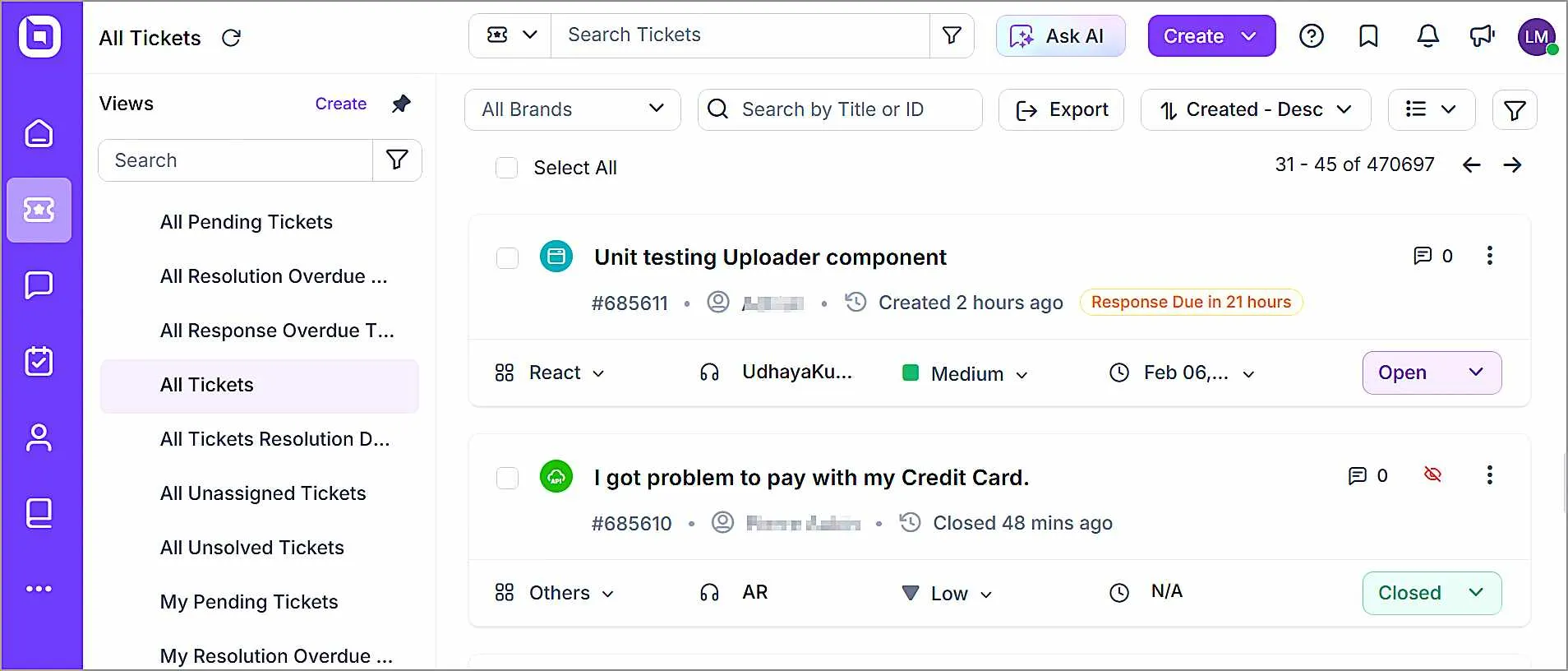
-
- Self-service tools empower customers to resolve common issues independently through resources like FAQs and knowledge base articles. They also provide tier agents with quick access to information, enabling faster and more efficient issue resolution.
- Workflow automation tools handle repetitive tasks like sending email notifications and reminders based on SLA automation rules. This ensures timely follow-ups, prevents ticket escalation, and improves overall efficiency.
- Task management tools help support teams break the entire support process into smaller, manageable tasks.
Implement tailored training programs
Your company should provide adequate training to support agents at each tier, focusing on how to effectively handle customer inquiries.
Organize workshops, seminars, and online sessions to empower your team with knowledge about each tier’s specific roles and responsibilities.
To promote continuous learning, offer refresher courses and updates whenever tools, products, or services change.
Tailored training ensures agents are equipped with the necessary skills and expertise for their role, keeping them aligned with evolving customer expectations and technological advancements.
Conduct continuous monitoring
Continuous monitoring allows businesses to track the performance of each tier and identify potential issues in the support process.
By monitoring real-time metrics like resolution time and customer satisfaction, businesses can quickly adjust and improve efficiency.
This approach helps pinpoint bottlenecks or delays, perhaps when agents receive issues for which they don’t have enough training.
Support leads can choose to provide training or have similar issues redirected to a higher tier in the future.
Benefits of implementing a tiered support model
A tiered support system with clearly defined roles and responsibilities at each level provides more effective, efficient, and customer-oriented service. Here are the key benefits of a tiered support system:
- Streamlines customer support operations: Separating customer queries based on complexity or knowledge required enables support agents to address each problem efficiently.
- Increases customer satisfaction: Customers receive quicker support when difficult issues are sent immediately to the agents best equipped to handle them, leading to better experiences.
- Improves efficiency: Each tier focuses on specific issues, speeding up response times.
- Optimizes resource allocation: Allows businesses to assign resources effectively, reserving specialized experts for complex problems.
- Enhances scalability: As your business grows, a well-defined tiered support system lets leads understand more easily what expertise to look for in new hires and exactly what training they need. If resolution times for tier 2 go down, that’s where HR should focus.
- Saves money: Reduces operational costs by resolving simpler issues at lower levels without involving higher-level experts.
Metrics to evaluate the effectiveness of a tiered support model
Measuring the effectiveness of your tiered support helps you meet customer expectations and company goals. The following are some of the metrics commonly used:
- First contact resolution (FCR) measures the number of tickets solved during the first interaction. A high FCR indicates that the support model is effective in handling all customer issues.
- The average resolution time (ART) indicates the overall time taken to resolve customer tickets from start to finish. tiered systems tend to have shorter resolution times, as they direct issues to the most appropriate agents.
- The escalation rate measures the percentage of tickets that move from lower to higher tiers. Higher escalation rates indicate that issues are not being assigned the appropriate tier level or the agents lack the knowledge to handle these issues.
- Customer satisfaction score (CSAT) measures the overall satisfaction of customers after each support interaction. It helps assess the effectiveness of your support teams and highlights areas for improvement.
- Ticket volume by tier tracks the number of support requests handled at each tier. It helps determine whether tiers are being staffed appropriately.
- Agent utilization rate measures the time spent by support agents in solving customer issues against their idle time.
Modernize your tiered support system to drive success
Tiered support transforms the way customer service is delivered, structuring support into levels and routing requests accordingly. This method can help you improve efficiency, customer satisfaction, and cost-effectiveness.
Contact us to discover how BoldDesk® can help your teams efficiently handle tickets at every. Book a live demo or sign up for a 15-day free trial to try out its features.
We hope this article is helpful. Leave your comments in the section below!
Related articles



 Email Ticketing System
Email Ticketing System